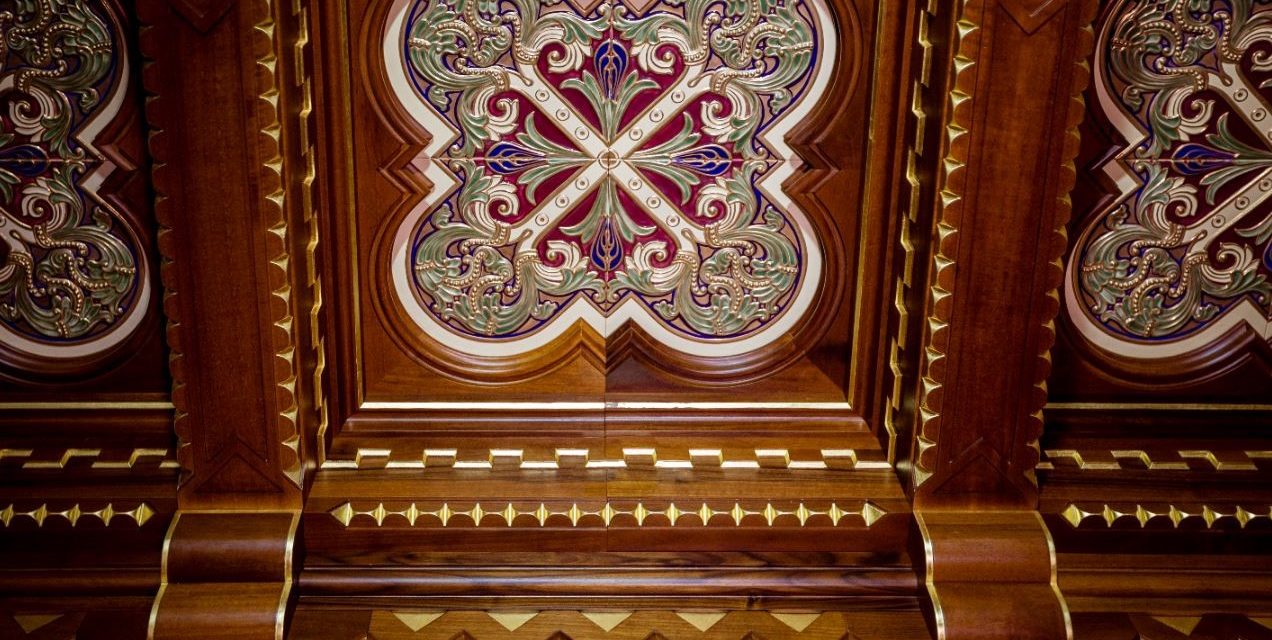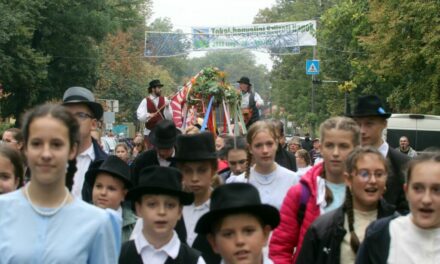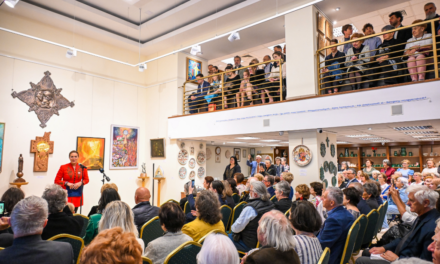The construction of the Szent István Hall in the south connecting wing of the Buda Castle has reached its next stage. According to a statement from the Castle Administration, the spectacular ceiling and parquet flooring have been installed, and most of the unique furniture has also been completed. The next task will be to create the sumptuous wall covering.
The room named after King Szent István is one of the most significant interior spaces of the Buda Castle, and at the same time, it was an outstanding achievement of Hungarian industrial art at the turn of the century, which deservedly achieved international success at the World Exhibition in Paris in 1900.
The release of the Castle Administration reminds us that fine, meticulous, intimate details played a key role in the decoration of the hall, and in addition to the basic neo-Romanesque style features, Hungarian ornamentation also appeared in many places. In addition to the artisans who work with goldsmiths, metals and wood with artistic care, the works of sculptor Alajos Strobl and ceramic artist Vilmos Zsolnay, as well as pyrogranite pictures made after the royal figures of the painter Ignác Roskovics, decorate the interior of incomparable beauty.
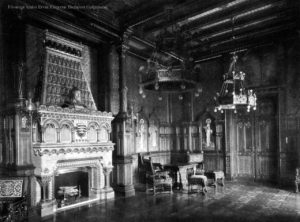
(Source: FSZEK Budapest Collection)
The legendary location was built in II. The part of the building that was completely destroyed in World War II, along with the reconstruction of the southern connecting wing, is being recreated by the specialists of the Castle Administration. Within the framework of the National Hauszmann Program, many art historians, industrial artists, restorers and other professionals have been working for years to restore the Szent István room to its former glory for visitors to the Palace. As a first step, they had to reconstruct the room's decoration and furnishings in as much detail as possible, using old documents and photos. Fortunately, the latter were of such quality that the detailed, complicated wood carvings can be clearly seen on them.
The high-quality archival photos also show that the most defining material of the room is wood, which covered the floor, ceiling and walls. The parquet was made in the factory of the Neuschlosz brothers at the turn of the century, now the specialists have made it identical to the original, from three types of wood. The main motif of the extremely complex inlaid floor is the dragon shape, all the elements are made of three materials: red oak, black walnut and South American mahogany. At the edges of the room, the parquet is accompanied by a decorative strip with a geometric pattern running under the wall covering.
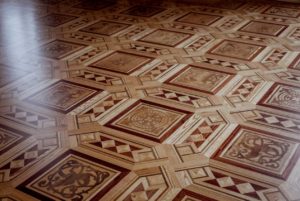
The inlaid floor is made of three types of wood (Photo: Castle Administration)
The ceiling, the side wall and the furniture all came from the workshop of Endre Thék, who gained fame with his artistic woodwork during the dualism era. The ceiling of the hall consists of beamed, carved decorative, coffered parts, the wood is first-class, knot-free, pre-steamed garden walnut, and 24-carat gold plates were used for its surface decoration. The Zsolnay pyrogranite tiles fitted into the cassettes, which can also be interpreted as separate images, give the ceiling a real special feature.
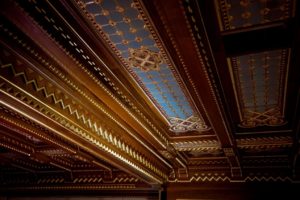
The ceiling of the Szent István Hall (Photo: Castle Administration)
The reborn Szent István hall will open on August 20 in the Budavári Palace.

